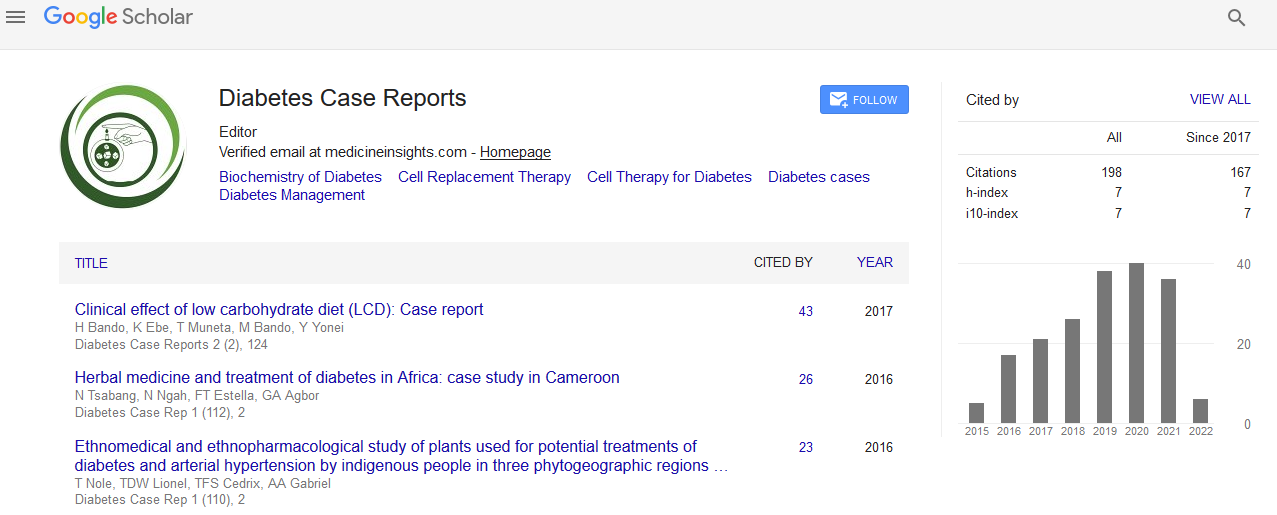Indexed In
- RefSeek
- Hamdard University
- EBSCO A-Z
- Euro Pub
- Google Scholar
Useful Links
Share This Page
Journal Flyer

Open Access Journals
- Agri and Aquaculture
- Biochemistry
- Bioinformatics & Systems Biology
- Business & Management
- Chemistry
- Clinical Sciences
- Engineering
- Food & Nutrition
- General Science
- Genetics & Molecular Biology
- Immunology & Microbiology
- Medical Sciences
- Neuroscience & Psychology
- Nursing & Health Care
- Pharmaceutical Sciences
Abstract
Clinical Effect of Low Carbohydrate Diet (LCD): Case Report
Hiroshi Bando, Koji Ebe, Tetsuo Muneta, Masahiro Bando and Yoshikazu Yonei
Background: The discussion concerning calorie restriction (CR) and low carbohydrate diet (LCD) has been continued for long yeas. As to LCD, we have reported lots of experience and research for glucose variability and ketone bodies. Subjects and methods: Three cases with type 2 diabetes mellitus (T2DM) were on LCD and studied. Methods included 3 patterns of LCD meal which are super, standard and petit LCD, with including carbohydrate ratio 12%, 26% and 40%, respectively. Case 1 (61, M) showed hyperglycemia about 150 mg/dL to 300 mg/dL in daily profile with 12.5% in HbA1c. Starting super LCD therapy, the glucose profile decreased to less than 150 mg/dL and HbA1c decreased to 6.7% in 3 months. Case 2 (53, M) revealed HbA1c 8.3%, weight 110 kg and body mass index 34.5. By super LCD, his weight was decreased 17 kg in 5 months, with normalized HbA1c and elevated serum 3-hydroxybutyric acid (3-OHBA). Case 3 (72, M) had always extremely elevated fasting triglyceride for 5 years. Starting petit LCD for 2 years, triglyceride and weight were decreased moderately. Successively, changing to standard LCD for 1 year, weight was decreased 6 kg, and triglyceride was normalized. Discussion and conclusion: Each case suggests the characteristic beneficial effect of LCD. From our clinical experience and research, super LCD method, which is one of the very low-carbohydrate ketogenic diet (VLCKD), has evident efficacy of weight reduction. Super-LCD is characterized by strictly limitation for carbohydrate. Standard-LCD and petit-LCD method can be useful and applicable in response to the status of the patients. Thus, LCD treatment have beneficial effects for patients with various status.

